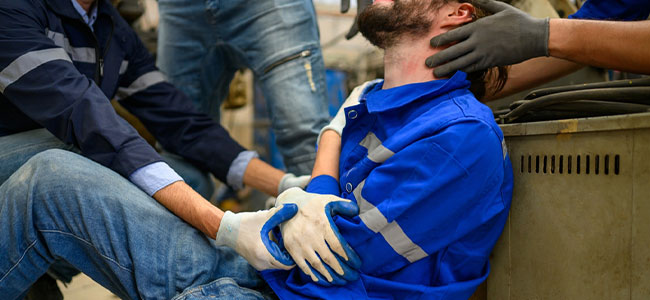
BLS Reports 5.7 Percent Increase in Fatal Workplace Injuries in 2022
The report found a total of 5,486 fatal occupational injuries in the United States in 2022.
- By Robert Yaniz Jr.
- Dec 20, 2023
The U.S. Bureau of Labor Statistics (BLS) released its annual Census of Fatal Occupational Injuries (CFOI) for 2022, revealing a 5.7 percent increase in fatal work injuries over the previous year. The report discloses alarming trends and highlights in occupational health and safety.
Released on Dec. 19, 2023, the BLS report identified a total of 5,486 fatal work injuries in the United States for 2022, up from 5,190 in 2021. The fatal work injury rate also saw an uptick, reaching 3.7 fatalities per 100,000 full-time equivalent (FTE) workers, compared to 3.6 in 2021.
The report found a worker fatality occurred every 96 minutes in 2022, a slight drop from 101 minutes in 2021. Notably, fatalities resulting from violence and other injuries inflicted by persons or animals rose 11.6 percent. Homicides made up 61.7 percent of these, up 8.9 percent.
Workers in transportation and material moving occupations experienced the highest number of fatal work injuries in 2022, totaling 1,620. Construction and extraction workers followed closely with 1,056 fatalities, marking an 11 percent increase from 2021. Transportation incidents remained the most frequent type of fatal event, with 37.7 percent of all occupational fatalities.
Jessica E. Martinez, co-executive director of the National Council for Occupational Safety and Health (National COSH), specifically responded to the revelation that the fatal injury rate for Black or African American workers (4.2 percent) and Hispanic or Latino workers (4.6 percent) increased in 2022. Both totals surpassed the all-worker rate of 3.7 percent per 100,000 FTE workers, with transportation incidents the leading cause of death for both groups.
“This disparity reflects both historical and current discrimination in our workplaces and cannot be tolerated. All workers have a right to get home safe and sound after a day at work,” Martinez said in a statement. “We live in a world with many intractable problems. Reducing workplace deaths and injuries is not one of them. A worker-centered approach, based on sound science, can reduce and eliminate the hazards we face on the job, and result in fewer empty seats during next year’s holiday celebrations.”
In addition to echoing this sentiment regarding the BLS report, OSHA Assistant Secretary Doug Parker commented on the fact that unintentional overdoses increased 13.1 percent from 2022. Likewise, the rate of suicides increased by 13.1 percent as well, following a drop in related fatalities over the previous two years.
“The BLS census also finds work-related overdoses and suicides continue to be causes of great concern, and they are another call to action for [OSHA], employers and other stakeholders to address these very serious issues,” Parker said in a statement. “Mental health must be part of overall worker safety and health. We are committed to supporting the mental health of all workers, just as we are committed to protecting them from physical hazards on the job.”
The 2022 CFOI—including fatal injury counts and rates broken down by occupation, industry and worker demographics—are currently available on the BLS website.
About the Author
Robert Yaniz Jr. is the former Content Editor of Occupational Health & Safety.